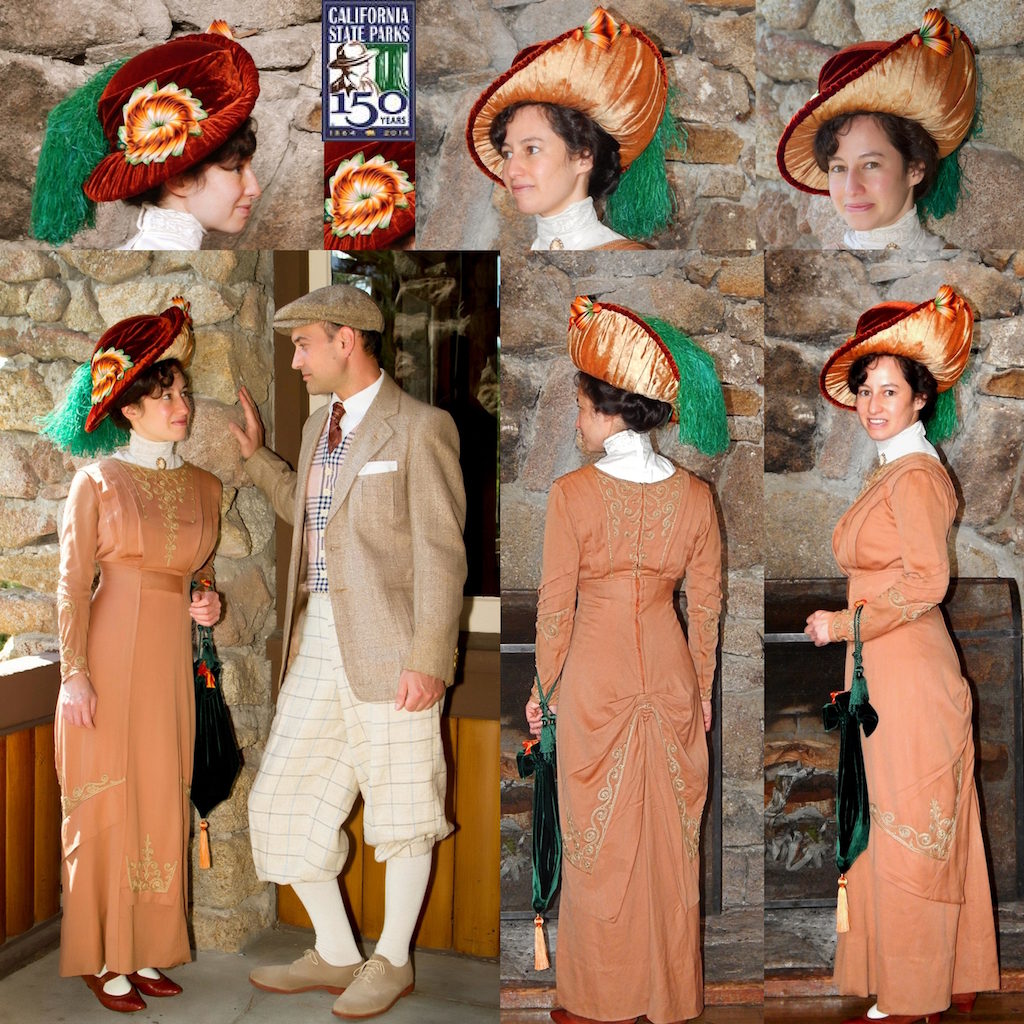
The base of this hat, which is as light as a feather, is part wireframe and part shaped buckram.
I did not take pictures as I was making it but i do have a picture from the inside without the lining which will give you an idea of how it was made.
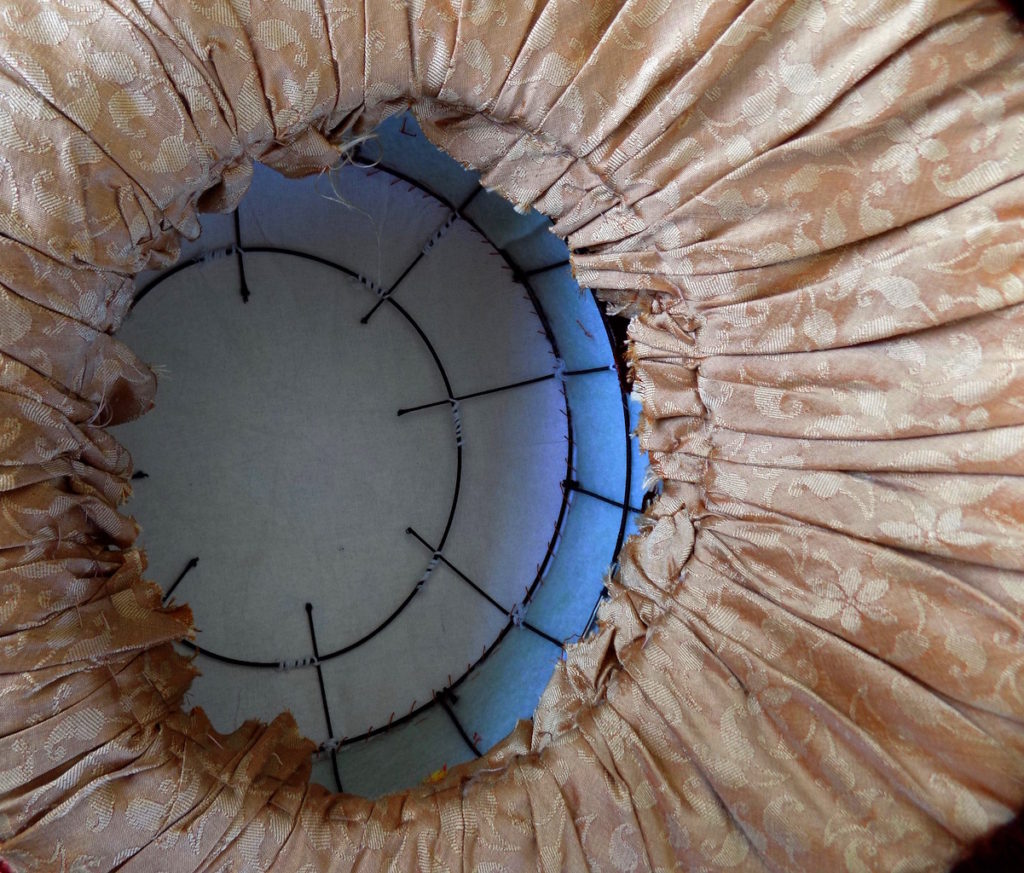
You are looking at the crown thru the head opening in the brim. Usually the crown tip of a wireframe has would have 8 wires that cross over in the center.

The white wires at the cross overs are a thread covered wire I like it for making wireframe hats. What you see at side is a green batting I used to use for mull not I use the cotton version of this or French Fleese.
Instead I keep 8 of the wired from the crown sides bent then at an angle then had them cross over a small oval of wire. All that supports a shaped buckram crown tip. On the sides of the crown there is nothing but the wire and the Mull (batting) and the outer fabric.
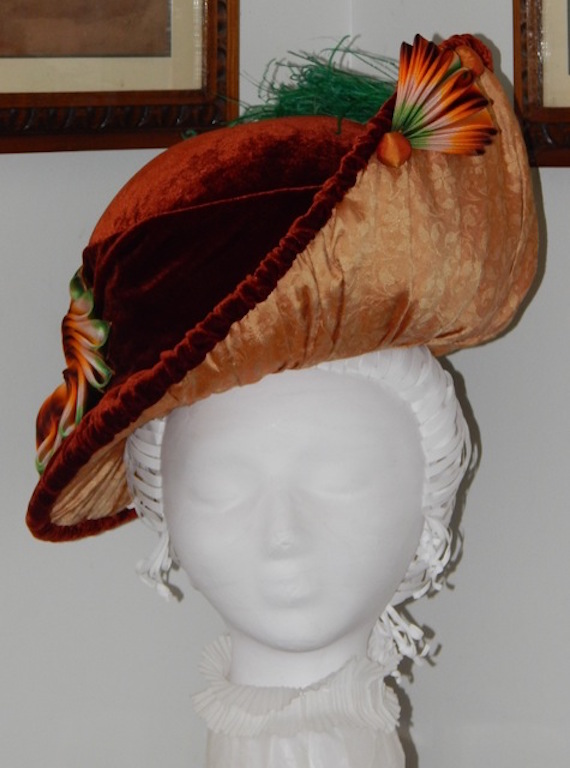
As you can see the crown tip is very smooth I did not think I could get it smooth if I had to drape it over wires.
The crown is separate from the brim and has a much larger head opening that the brim. This is standard with Edwardian hats. Other wise they would fall down on a persons head and you would never see their face.
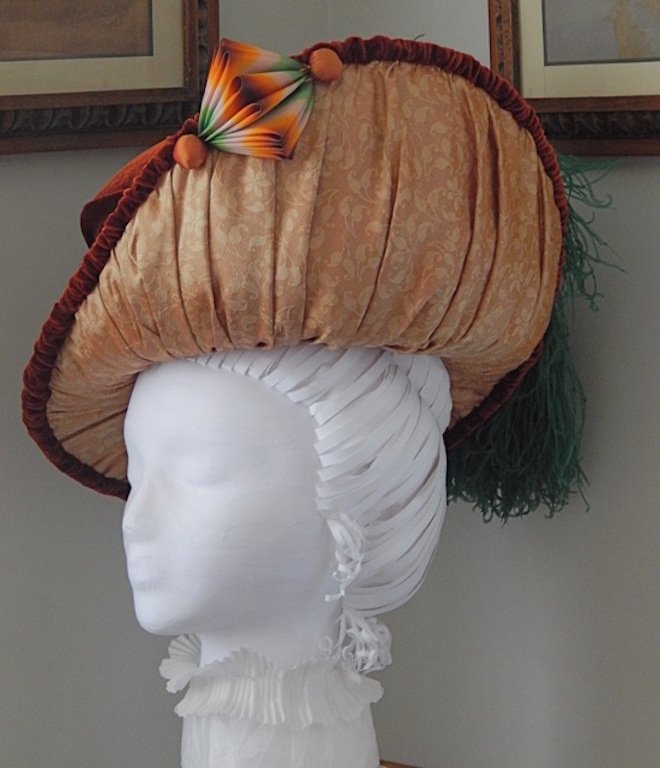
The brim was made with 8 spokes and 4 oval wires. The spokes on the left are much longer than those on the right and curve up while the ones on the right curve down. Every where the spokes and the oval wires cross they are wired together.
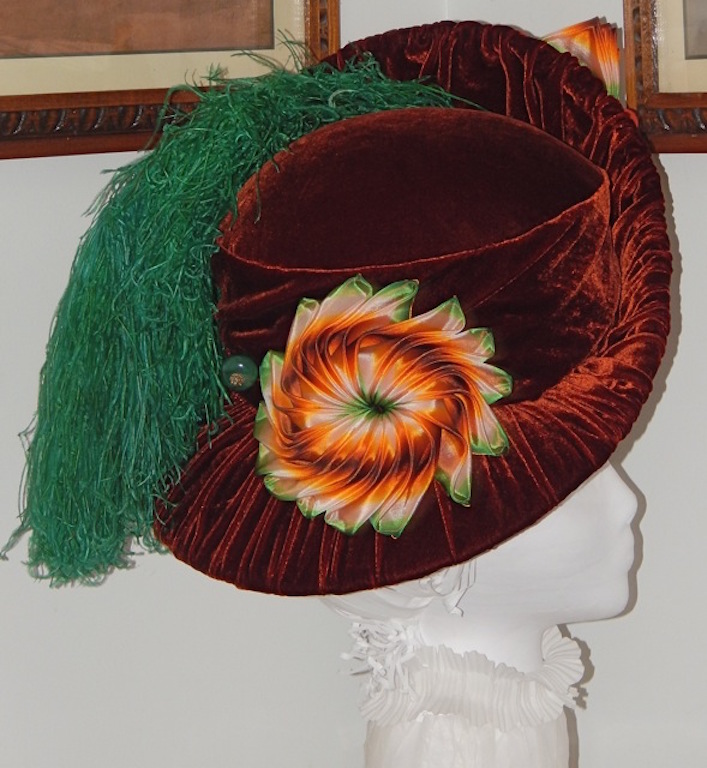
The underbrim was covered first then the upper brim velvet was added. It is a long rectangle that is sewn to the under brim edge and then flipped to the upper brim and gathered to fit the head opening hole.
The cockade was made from vintage silk wired ribbon.
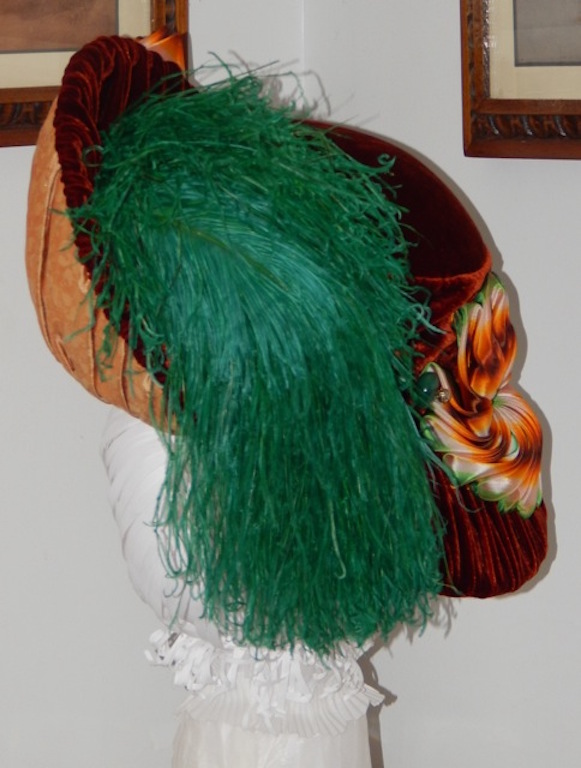
This is a single Willow plume. It was made in the early 20th C and was made you tying the barbs of 3 others feathers onto the barbs of the first one. This was often done by children. Women would take them home as piece work and have tiny hands do the knots. It helped with the family income.